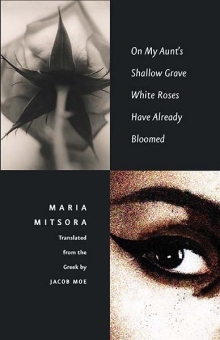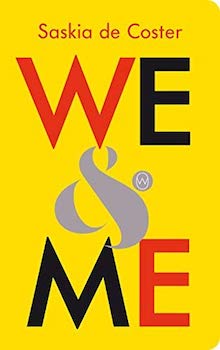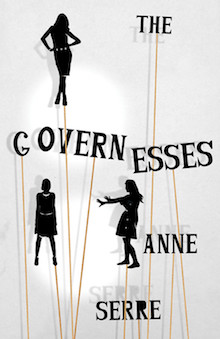The Simple Pleasures of Reading
My initial plan for this post was to do a huge data dump for Women in Translation Month, but Meytal Radzinski already went and totally crushed it. She has all the best graphs, pie charts, breakdowns, overviews, recommendations, and more. Go click on that link and spend a day reading everything she has to say. I looked over her posts yesterday to see if there was something obvious and fun to add, and aside from adding to her speculation as to the disparity in the number of books by men and women that are translated (which I don’t want to do because her analysis and opinions should stand on their own) or converting the year-by-year evaluations to rolling twelve-month graphs, I have basically nothing to say.
Check her shit out. It’s worth it. It’s smart. It has incredible visual representations of the data. It has an edge and a quest and a vision.
*
That’s why I’m going to set aside the statistical breakdowns of women in translation (for now) and try and write something different. The problem is that I have two or three ideas that don’t really connect, but want to shoehorn together so that all three of the books I read for this post get some attention. (If one of these posts on this website really counts as “attention.” I swear, if Bookmarks ever started tracking these for their Bookish Rotten Tomatoes, every one of my pieces would be categorized not as positive or negative, but as: ¯\_(ツ)_/¯.)
One of my inspirations for at least 85% of these posts is baseball writer Sam Miller. I mostly know him from Baseball Prospectus and the Effectively Wild podcast, but more recently he’s been writing for ESPN. And confusing the shit out of your average ESPN consumer. It’s wonderful! For example, his most recent post is a ranking of the 17 common types of double-plays. He doesn’t think about sports in the typical “RAH RAH MAKE MEN OUT OF LIONS HE IS NOT AN ELITE QUARTERBACK” stuff that populates most every sports-radio station in the country. Locally we have a sports program called “Danger and Bataglia” that is 95% screaming “No, YOU’RE wrong” followed by “Bills . . . ya know” and a heavy sigh. Sports people are typically pretty lame.
But not Sam!
Sam looks at things differently. And by looking askew at the structures of this particular game, he finds interesting new ways to talk about a game that is, by its very nature, incredibly repetitive. I dream of embracing this sort of ethos with my weekly posts. There must be interesting ways to talk about literature and publishing and book culture that can supplement the good stuff that’s already out there. The brilliant academic studies, provocative book reviews, journalistic pieces that contextualize the business aspect of book production, and the, I guess?, listicles that introduce average readers to books they should probably learn about in other contexts. I don’t know what this other kind of writing would be exactly, epescially since I’m not a Sam Miller-like genius, but his overall approach is my personal guiding light when trying to write these posts.
Going back to that double-play article of his, I was struck by his tweet about it, in which he said, “writing this sharpened my affection for many common baseball things.” In trying to write these posts, in trying to find new angles, new statistics, new ideas about how the industry works, new things to say about a ton of books that are mostly “just fine,” it’s easy to get all swept up into the complications and the system and the frustrations of working in an industry where around 95% of ideas/projects/books fail and in the generalized anxiety of living with an unhealthy amount of depression in 2018—it’s easy to get caught up in all that and forget that as much as all of this seems like bullshit, we just don’t stop reading. We like it. There are common pleasures to be found in books.
Just like Cardinals baseball in the post-Matheny Era. (You didn’t really think I’d give up on the baseball stuff, did you?)
*

On My Aunt’s Shallow Grave White Roses Have Already Bloomed by Maria Mitsora, translated from the Greek by Jacob Moe (Yale University Press)
A few weeks ago I got all into reading short stories. After reading The Book of Riga, I started thinking about how short stories were a form that was so very central to my early reading experience, but something that I had grown away from over the past few decades. I’ll still always cite Julio Cortázar’s Blow Up and Other Stories as one of my favorite books of all time, but outside of the collections we’ve published, I can’t say that I’ve even purchased a contemporary story collection in the past few years.
This probably isn’t all that unusual. Outside of Carmen Maria Machado (whose book I absolutely 100% want to find the time to read) and George Saunders (who I have read, but in audiobook form because listening to stories is perfect for bike rides to the office), most story collections just don’t sell.
Which is odd and unfortunate. Unfortunate, since most writers cut their teeth on the short story format, and odd because readers seem to be turned off by long books yet love tweets, so why not something in that sweet spot of a 10-20 minute reading experience?
I don’t have hard data on the sales for short story collections, but as part of an article I’m writing for Publishers Weekly, I started looking into which type of books get translated into English—including the number of short story collections that make it over here.
At the time I ran these numbers, I had data on 332 works of fiction in translation to be published in 2018. Of those, 24—24!—were story collections.
But that doesn’t tell the whole story.
Only 13 titles—13 of 332, or a mere 4%—were collections written by a single author. All the others were anthologies.
So, of the 3% of books that are published here that are in translation, only 4% of those (for 2018, small sample, blah blah, I know, I know) are short story collections. Strange, no?
I’m sure everyone reading this can come up with a bunch of different theories why short story collections don’t sell enough copies to warrant having more of them translated. Why read a story when you can read a full novel? Most collections have a few good stories and some duds. Stories aren’t satisfying, because once I get to know the character it’s all over.
I’m curious about the relationship between stories and value. Stories are something that’s common, a pleasure we can acquire from so many different magazines and online publications. I canceled my subscription to the New Yorker because I was annoyed with something and am impulsive to whatever is beyond a “fault,” but I still read “Cat Person.” Stories are there. If you want a thing to read and don’t want to invest too much of your time or money, you can find a decent enough short story. Given that, why would you pay for a collection? There are so many free stories out there!
I don’t know if that’s what’s at work in the subconscious of most readers or not, but 4% is pretty surprising.
In terms of this particular short story collection . . . I. Well. I. So. Funny story. I read this book some weeks ago. And I put it. Somewhere. And that where is someplace I can not find. I know that I had marked a number of stories worth mentioning, and had written a bunch of notes in the margin, but. But. Well. So. My memory of short stories? It’s garbage. I mean, like, way more garbage than my memory of names or conversations I may have had. There are times where I feel like I live moment to moment, where it’s a new world every time I open my eyes, but that feeling especially comes home when it comes to remembering stories. I liked this book, but, given all that, I assume I didn’t love it. I read its pages, yet misplaced it for weeks.
I do remember how varied the sixteen stories are in the collection. Many different forms, tones. And that’s something I respect. It’s actually something that came up in my class last semester: When you have a book of short stories, do you prefer an author like Fleur Jaeggy (in I Am the Brother of XX at least) who does one thing really fucking well, or would you like a collection to be a bunch of different things, some which work better than others? No idea! Without my notes I can’t remember the Jaeggy or the Mitsora with enough confidence to even state my opinion. Story collections are a tough sell.
But I think if there’s one book in the post you should buy, it should be this one. It’s a good book—I promise. It might not rock your world, but if you’ve been a serious reader for more than a few years, you’ll know that those world-rocking books are a very very rare occurrence. There’s a point where you don’t read to have your head blown off, your mind exposed to some rare artistic or philosophical miracle, you read because it’s a thing you do. It’s a common pleasure.
Buy this book because Yale published it. There are a good number of presses doing translations these days, many of which have found their niche, their audience, their way of promoting the brand. And Yale has done all of these things with their incredible series (which includes Patrick Modiano, before he won the Nobel), yet they don’t get the Twitter love they probably deserve. There are times where publishing feels like a zero-sum game with only so many translation sales to go around, but to be optimistic (this is the moment when my new antidepressants are really kicking in), there should be space in the world for Tweeter People to gush over the latest books—translated or not—from Coffee House, Open Letter, Yale, Knopf, Deep Vellum, Biblioasis, HarperCollins, HMH . . . well, OK, HMH is a reach, but still, there’s no reason not to give some love to everyone. In a profession of loners and cliques, a retweet can go a long way. (Antidepressants make me feel like all my writing should be hanging from the wall of a dingy dentist’s office.)
Yale is an unsung hero of translation.
*

We & Me by Saskia de Coster, translated from the Dutch by Nancy Forest-Flier (World Editions)
Speaking of unsung heroes, World Editions is probably a new name to most all of you. And yet, they were founded in the Netherlands in 1983 (!) and has just now entered the American marketplace. (To put it as journalistically as possible.)
What’s interesting—especially in relation to Women in Translation Month—is that 7 of the first 10 original translations they’re selling in America are written by women. (Caveat: they have at least one other book by a woman, but it’s a reprint. Which reminds me that Open Letter’s numbers re WIT seem a bit off this year, in part because we’re doing American Fictionary [nonfiction] and Camellia Street [reprint], which are both by women, but don’t show up in the stats. I have traditionally been very defensive of my database when people—you know who you are—have critiqued it, but I am very aware that it’s capturing a particular slice of the translation publishing scene. A big part of it, but a slice nonetheless.) That’s cool! Go World Editions! Also buy their books and Tweetstorm them.
That said, here’s the opening line to the copy on the galley:
In this spellbinding novel, which has been compared to the work of Franzen, Eggers and Eugenides . . .
Two things:
- Why did I pick this up? I’m anti- one of those comparisons, OK-ish on another, and apathetic about the third;
- Everyone sing along with me: “Why do publishers always compare books by women to those written by men?” (Once you notice this, shit is gonna get weird. Don’t say you weren’t warned.)
That said, I read . . . half? of this. It’s “just fine”! It didn’t fulfill my dream of finding a How Did This Get Made? sort of book that I could riff on and we could all laugh at together. (In part because books are a) too personal, and public failures are only ridiculed if a team was behind it, and b) book people don’t rip on shit like this. There are no Razzies for the worst Franzen sex scene every year.)
It also didn’t fulfill my dream of being one of those sorts of books that you find yourself sucked into against your will, turning pages to find out what happened, worrying about the characters. I rarely read that sort of book—I’m dead inside and don’t like feeling manipulated—but when I do, I want to go all the way in. I want to dream about these dynastical families. I want to cry when characters suffer. I want drama on a 90210 level that makes Riverdale look like drama for kids being weaned from Teletubbies. We & Me had that promise at the start, but it’s so concerned with status in a way I can’t relate to, and a bit paint-by-numbers when it comes to anxiety that I just couldn’t buy in. I almost did, and did like the font they used (Dolly), but on the whole, it’s just not for me. It’s for people who love Franzen. And unfunny-Eggers.
That’s a simple pleasure that a lot of people turn to books for: drama you can invest in. Life is mostly boring. Don’t get me wrong, I’d much rather be alive than dead and there are a billion and one things that are interesting and amazing about everyday life, but there’s also a lot of repetition (baseball has 162 games a year with 51-54 outs per game) and a lot of time that’s wasted. We’ve filled that with Facebook and Twitter and the Internet generally (why doesn’t the News app on my iPhone refresh with new stories every 15 seconds?), but when that wasn’t a thing—or when you’re aware of how thin all those things are—we turned to stories. Movies, TV shows, books. Books take the longest, which gives them an advantage (? sure?) of getting you invested in a deep, long-term way. (As long as we’re talking about novels? Short stories are . . . well . . . you know.)
I miss reading these books sometime.
I need to change up my reading habits sometimes. Give my reading brain all the different sorts of things it wants.
*

The Governesses by Anne Serre, translated from the French by Mark Hutchinson (New Directions)
Along with Pretty Things (and Fox, but I’ve made a point of NOT mentioning Open Letter titles in these posts), this is my book of the summer. I loved this book. Every time that I thought it was starting to drag—and it’s only 48 pages long, approximately—it picked right back up. It’s funny, it’s dirty, it’s unique.
And it has no place in this post.
Is French an unheralded language in the world of translation? NOPE. Who gets more praise than New Directions? GOD?
So here is your horn, the post is the shoe . . . I should maybe stick with baseball metaphors?
I don’t feel like explaining this book—which reminds me of Children in Reindeer Woods in its ability to take a situation and make it mythic in a play-like way—so instead I’m going to leave you with three sentences, one from each of the books I’ve written about above. If one grabs your attention, click on it and buy the book immediately. I’m not joking. If all of you bought these books after reading this (for which I should thank you profusely, since this is long and full of the ramble), these presses would notice and be wowed.
Find your common pleasure—what are the words you like to hear, without necessarily understanding why, or who/what is behind them—and go with it.
Here we go:
Or
Falling in love with a language can be as overwhelming as falling in love with a person.
Or
Buy a book this week. Spend $15 on 6-14 hours of future enjoyment. Treat yourself to one of these. And please, get it from one of these five stores.

Leave a Reply